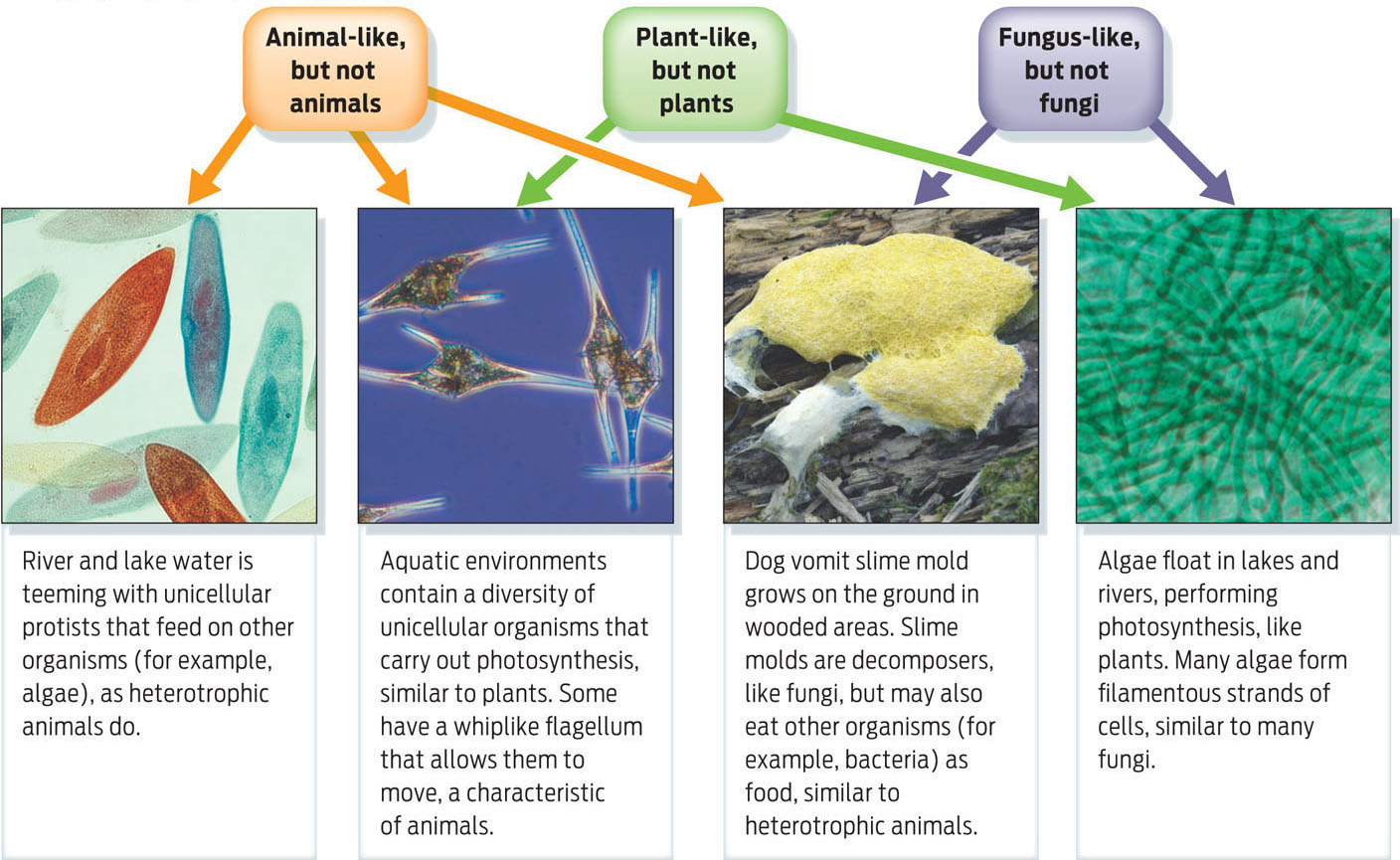A Microcosm in a Drop of Water
PROTIST A eukaryote that cannot be classified as a plant, animal, or fungus; usually unicellular.
ALGA (PLURAL: ALGAE) A uni- or multicellular photosynthetic protist.
The remaining eukaryotes in Olympic National Park are the ones you rarely see—swimming in drops of water or hiding in puddles under the leaf cover. Informally known as protists, these varied members of what used to be called kingdom Protista do not fit neatly into one group and are tricky to classify.
Most protists are unicellular, but there are also multicellular varieties, such as some types of algae. Multicellular algae photosynthesize like plants, but unlike plants they lack specialized adaptations for living on land, such as roots, stems, and leaves. Other protists are similar to animals in that they are heterotrophic, eating other organisms, but since they are unicellular they are not technically animals. Some protist species have long filamentous bodies resembling fungi, but they are no more related to fungi than animals are. In fact, genetic evidence shows that protists do not form a cohesive evolutionary group; some may be as distinct from one another as plants are from animals. Still a work in progress, our understanding of these diverse organisms is likely to evolve in coming years as we continue to learn more about them (INFOGRAPHIC 19.6) .
Protists are a diverse group of organisms that are difficult to classify. They share features with animals, plants, and fungi, but are not classified as any one of these. Nor do they have a single unifying characteristic that places them within a single evolutionary group. Most protists are unicellular.

423
Despite their diversity, protists do share some common traits. They are all susceptible to drying out, so they are typically found in wet environments: lakes, oceans, ponds, moist soils, and living hosts. Many disease-causing protists, for example, must spread directly from host to host because otherwise they would dry out. This explains why trichomoniasis, a sexually transmitted infection caused by the protist Trichomonas vaginalis, can be spread only through the exchange of bodily fluids during direct sexual contact.
Other protists live in the gastrointestinal systems of animals such as beavers and can be found in pond water where those animals defecate. Unwary campers who drink from a pond may find themselves stricken with an unpleasant diarrheal disease called giardiasis (aka “beaver fever”) caused by the protist Giardia lamblia.
However small and difficult they are to classify, protists can rightfully claim an important position on the eukaryotic family tree.
424

“National parks are here to serve as our national treasures, where we preserve and protect both our cultural and our natural heritage for future generations.”
–PATTI HAPPE
They were the first eukaryotes on the planet, evolving long before plants, animals, and fungi were even around.